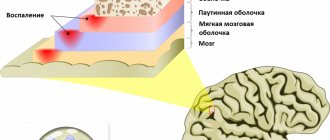Black hairy tongue syndrome is an unexpected and even frightening term. Such a strange name is not always clear to others. AiF.ru asked experts what this syndrome is.
“A hairy tongue is a manifestation of systemic diseases in the oral cavity. The name itself is associative. Of course, the tongue is not covered with hair. In fact, these thread-like papillae on the surface of the tongue acquire a tint that makes them look like hairs,” says dentist, chief physician of the dental clinic Ilya Antonov .
He notes that in addition to external changes, other symptoms may appear. Among them, the specialist names:
- foreign body sensation;
- the appearance of a feeling of dryness;
- slight burning sensation (not always).
Article on the topic
Summer misfortune. Why do ENT diseases occur in the warm season?
Causes
The exact causes of the pathology are not fully understood. The disease is not an independent disease; it appears against the background of other diseases. Most often, this phenomenon occurs in men over 40 years of age, but is sometimes observed in women. This disease is very rare in children.
The pathology is most often observed in people with gastrointestinal dysfunction, ulcers and gastritis. The development of the disease is greatly facilitated by poor oral hygiene, smoking habits and excessive coffee consumption.
The main causes of the development of the disease are considered:
- long-term use of medications, especially antibiotics;
- fungal infections;
- dehydration;
- chemotherapy;
- metabolic disease;
- weakened immune system;
- Regular rinsing of the mouth with solutions containing astringents.
The risk group also includes people with dental defects and the absence of a large number of teeth, since in this case they are forced to eat only soft food, which does not have the proper abrasive effect on the surface of the tongue.
Associated symptoms
If there really is a hair in the oral cavity, then the person feels:
- The presence of a foreign object that makes swallowing difficult;
- Constant desire to expel it by expectoration.
You should know! It’s another matter if we are talking about more than just a single sensation of a hair on the tongue.
When a symptom accompanies a number of signs , and there is actually no hair in the oral cavity, then this indicates the development of serious diseases .
Along with this unpleasant feeling, the following symptoms may occur :
- Irritation of the nasopharynx , accompanied by painful swallowing;
- Sore throat and urge to cough ;
- Unpleasant dryness , causing a desire to wet the throat;
- Difficulty breathing and hoarseness of voice ;
- Fever, swelling and lethargy;
- Feeling of nausea and vomiting ;
- Nervous obsessive states ;
- Changing the color of the tongue.
The presence of at least one of the listed signs is a reason to visit a doctor .
Remember! Timely detection of pathology will help protect health from possible serious consequences.
Symptoms
Pathology is immediately detected during a visual examination by a dentist. In the initial stages of the disease, the presence of a foreign object in the mouth is felt, other unpleasant signs gradually appear, then the upper part of the tongue noticeably turns black. In advanced cases, the affected area occupies two-thirds of the tongue. The disease is accompanied by unpleasant odor from the mouth, changes in taste sensations, a metallic taste appears in the mouth, a feeling of tickling and soreness on the surface of the tongue, as well as causeless nausea. In rare cases, there is a burning sensation and severe itching.
“Hairy” tongue – what does it mean, how does the pathology manifest itself and how to treat it
Dental problems can affect not only the teeth and gums, but also other elements of the oral cavity, and the tongue is no exception.
Some pathological processes affect the condition of this particular organ, which is why the patient begins to experience severe discomfort while talking and chewing. In some cases, pain and swelling occur; a dense coating on the surface of the epithelium can become a signal of the presence of an obvious problem. But one of the most frightening phenomena can be considered the appearance of so-called hair on the tongue and its severe darkening. Read further in this article about what it means when they talk about “hair” in the mouth, what the organ looks like with this pathology, why it develops and how to deal with the problem.
Treatment
It is necessary to contact a dentist or maxillofacial surgeon with such a problem. To obtain a complete clinical picture, it is necessary to undergo examination by a gastroenterologist, infectious disease specialist, endocrinologist and neurologist. Since the pathology develops against the background of other diseases, a comprehensive treatment regimen is used.
Only treatment of concomitant diseases, professional cleaning and treatment of the oral cavity, taking multivitamin complexes, antifungal medications and, if necessary, sedatives will help eliminate this unpleasant defect. Removal of heavily overgrown papillae can be carried out by cryodestruction (exposure to the pathological focus with liquid nitrogen). It is also necessary to adjust your diet, enriching it with foods with fiber, vitamins and minerals.
The prognosis for black hairy tongue is usually favorable. Elimination of causative factors, as well as appropriate comprehensive treatment of the disease, leads to complete restoration of the surface of the tongue.
Definition - what a “hairy” tongue actually is
If the tongue is noticeably blackened and processes resembling small hairs appear on its surface, we can talk about chronic hyperplasia of the filiform papillae. The development of this pathology is accompanied by severe deformation of the structure of the surface of the tongue. It all starts with the hardening of mucosal cells, which ultimately leads to an increase in the length of the taste buds.
"Hair" can reach a length of up to 2 cm
On a note! The disease occurs in both adult patients and children. At the same time, males are more likely to encounter it in adulthood.
Black hairs “grow” from the root of the tongue, gradually increasing in diameter, usually up to 2 mm. The length of one such process can reach 2 cm or more1. In this case, the surface of the papillae becomes hard, and over time acquires a brown or even black color - the saturation of the shade can say a lot about the degree of neglect of the problem. Typically, the pathology proceeds slowly, and pronounced manifestations make themselves felt only in the active stage of development of the disease.
Prevention
As such, there is no prevention of black villous tongue. Even with good oral hygiene, you can encounter a similar phenomenon, but with timely treatment of diseases that lead to the development of such a complication, you can minimize the likelihood of the disease occurring.
The following rules must also be observed:
- thoroughly brush your teeth, gums and tongue with a soft brush;
- It is necessary to drink enough water, because if there is a lack of hydration in the oral cavity, it begins to develop; bacteria;
- reduce coffee consumption and quit smoking and alcoholic beverages.
The disease recurs quite rarely. During an exacerbation, the patient is advised to follow a gentle diet; food should be warm and soft in consistency.
How to treat?
“Treatment includes several main areas - examination and determination of the level of hygiene, followed by professional cleaning with special solutions and brushes. A smear is also taken from the surface of the tongue to determine the pathological composition of plaque in the laboratory and select effective drugs,” says Ilya Antonov. He notes that such a syndrome can be false and becomes a consequence of severe systemic diseases, such as leukoplakia and Addison's disease.
“To exclude these diagnoses, the dentist refers the patient for additional studies. In any case, you should not hope that the situation can be dealt with using home remedies. Therefore, you should consult a doctor,” says Ilya Antonov.
Otorhinolaryngologist Zaitsev, in turn, notes that one must pay attention to the controllability or uncontrollability of the situation. “A controlled state is when it is enough to give up some foods or the same medications for the situation to gradually level out. An uncontrollable situation is when a person goes on a diet, and a strict one, but the situation does not change. In this case, it is necessary to consult a doctor and not delay,” says Vladimir Zaitsev. After all, the situation, as doctors emphasize, can be quite serious, and there is no point in wasting time, as this will directly affect the outcome of treatment.
Preventive measures
To minimize the likelihood of coming face to face with such an unpleasant problem, it is important to ensure competent and high-quality prevention. To do this, experts in the field of hygiene and dentistry strongly recommend adhering to the following rules:
- daily brushing of the tongue: twice a day you need to brush not only your teeth, but also your tongue, because no less bacteria accumulate on it than on the surface of the enamel. To do this, you can use the rear ribbed surface of the brush, if it has one, or, for example, purchase a special device in the form of a tongue scraper,
Cleaning your tongue daily will help avoid the problem. - use of rinses: an excellent option can be a pharmaceutical product that not only fights bacteria, but also helps reduce inflammatory processes, helps remove food debris not only from the surface of the organ, but also under the tongue,
- systematic visits to the dentist: it is advisable to undergo preventive examinations at least once every six months. Regular visits to the dentist’s office will allow you to quickly detect the problem in its very beginning, and therefore quickly eliminate it,
- floss and irrigator: to maintain general oral hygiene, do not forget about such important devices as dental floss and irrigator - a portable device that removes plaque and dental deposits through a jet of water and air supplied under high pressure.
Any dental problem can be solved if you respond in time to suspicious changes in the condition of the teeth and oral cavity. The appearance of any neoplasms on the mucous membrane, the occurrence of pain and the formation of plaque on the tongue - all this is a serious cause for concern and an obvious signal that you need to see a doctor.
- Borovsky E.V. Therapeutic dentistry, 2003.
What could be the consequences?
If you ignore the obvious signs of the development of pathology for too long, after a while it can lead to complications that will negatively affect the condition of the oral cavity as a whole. Experts consider the following phenomena to be possible problems in the future:
- inflammatory processes in periodontal tissues,
- deep caries,
- partial loss of sensitivity of the tongue,
- microflora imbalance,
- decreased intensity of salivary fluid secretion,
- dryness of the mucous membrane.
Pathology can also negatively affect the condition of other internal organs and systems. For example, enlarged papillae inevitably lead to rapid proliferation of bacteria, and hence problems with the gastrointestinal tract and respiratory system.
Language structure
To understand what is happening and why the papillae of the tongue hypertrophy, let us consider its structure. It is a muscular organ that is covered with a mucous membrane. The body of the tongue is covered with papillae of four types:
- leaf-shaped, they are located on the lateral surface of the tongue and contain taste buds and glands that produce a secretion resembling viscous saliva;
- grooved, they are located at the root of the tongue, the largest and fewest papillae of the tongue, contain taste buds;
- mushroom-shaped, they are randomly located over the entire surface of the tongue, also containing taste buds;
- thread-like, the most numerous, located on the back of the tongue, their function is to retain food and touch, they do not contain taste buds.
Thus, the anatomy of the tongue lacks hair follicles from which hair grows. Therefore, the name “hairy tongue” is conditional. The overgrown filiform papillae are very reminiscent of hair.







